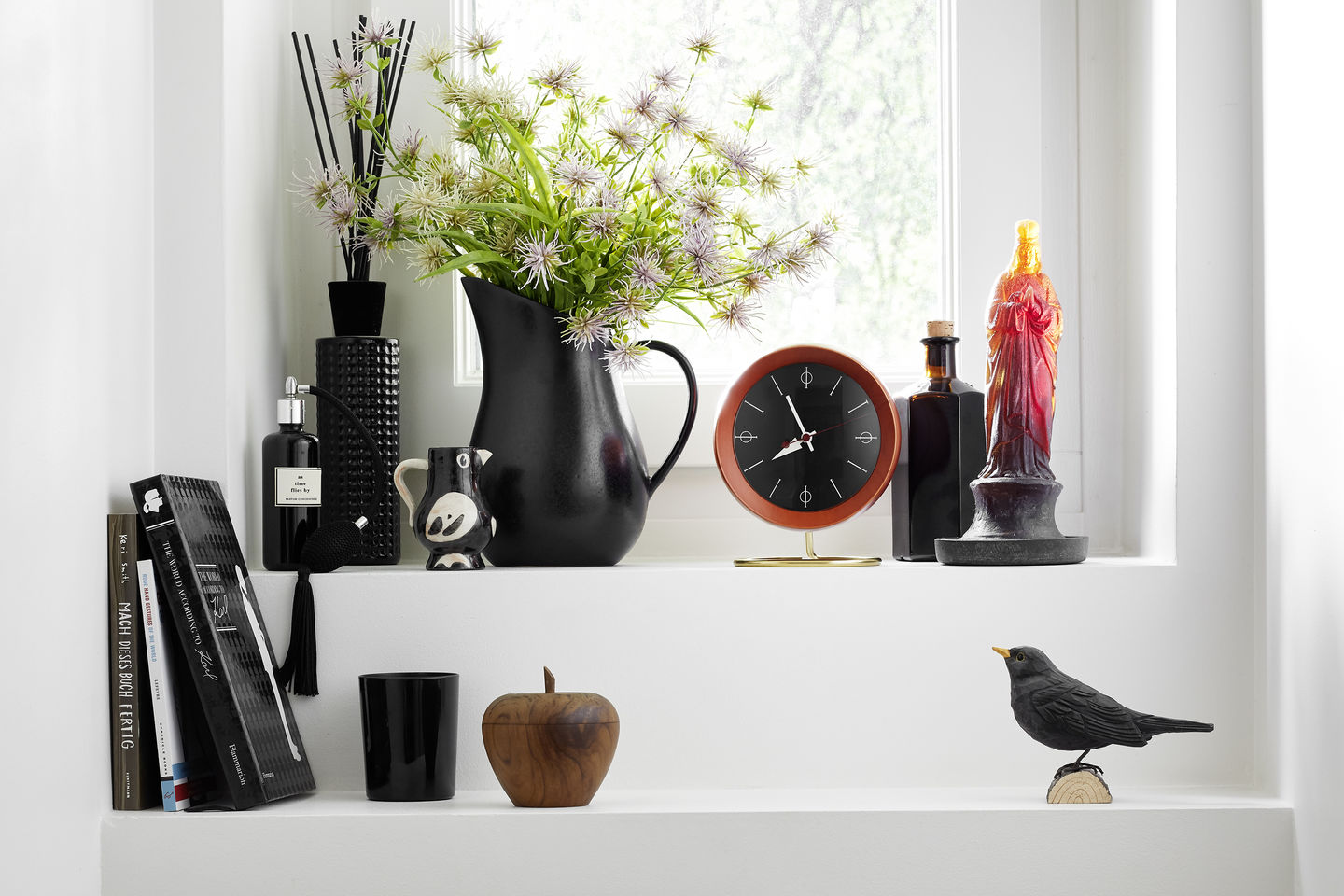Desk Clocks
George Nelson, 1947/1953

In 1947, the American designer George Nelson was commissioned to create a collection of clocks. Nelson analysed how people used clocks and concluded that they read the time by discerning the relative position of the hands, which made the use of numbers unnecessary. Furthermore, since most people wore wristwatches, he assumed that clocks had become more of a decorative element for interiors.
These ideas provided the basis for the first collection of 14 timepieces, consisting of a completely new style of wall clocks and compact table clocks, which were launched on the market in 1949. Although the models all shared one common feature – the absence of numbers – the diversity of their shapes, colours, materials and designs could hardly have been greater.
These ideas provided the basis for the first collection of 14 timepieces, consisting of a completely new style of wall clocks and compact table clocks, which were launched on the market in 1949. Although the models all shared one common feature – the absence of numbers – the diversity of their shapes, colours, materials and designs could hardly have been greater.

In the 35 years that followed, the designers at Nelson Associates conceived more than a hundred different clock models: wall clocks, portable table clocks and built-in clocks. After Nelson's death in 1986, his archival estate, encompassing roughly 7400 manuscripts, plans, drawings, photographs and slides dating from 1924 to 1984, was acquired by the Vitra Design Museum.
Vitra began reissuing the Nelson Clocks in 1999 and continues to expand the collection with new pieces from time to time.
The Desk Clocks are available in various shapes and materials. Equipped with high-quality quartz movements, they continue to offer a refreshing alternative to conventional clocks.
Vitra began reissuing the Nelson Clocks in 1999 and continues to expand the collection with new pieces from time to time.
The Desk Clocks are available in various shapes and materials. Equipped with high-quality quartz movements, they continue to offer a refreshing alternative to conventional clocks.

Information
Colours and materials
Product and safety information
Dimensions
Colours and materials
Product and safety information
Dimensions
This product was designed by
George Nelson



George Nelson is regarded as one of the most important figures in American design. Active as an architect, a product and exhibition designer and a writer, he was a leading voice in the discourse on design and architecture over several decades. Vitra is the sole authorised manufacturer of specified Nelson products for markets in Europe and the Middle East.





